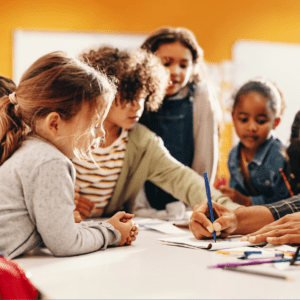Project-Based Learning (PBL) is an innovative approach to teaching that encourages students to gain knowledge and skills by working for an extended period on a project addressing a complex question, problem, or challenge. This article will explore the benefits of PBL and provide strategies for effectively incorporating it into your classroom.
Understanding Project-Based Learning
Project-Based Learning is a student-centered pedagogy that involves a dynamic approach to teaching, where students explore real-world problems or challenges. Through this exploration, students acquire a deeper understanding of the concepts and standards at the heart of a project. Key elements of PBL include:
- Real-World Connection: Projects are grounded in real-world issues and challenges, making learning relevant and engaging.
- Inquiry and Innovation: Students have the opportunity to investigate issues, ask questions, and create innovative solutions.
- Student Autonomy: PBL encourages student independence and autonomy, fostering responsibility and ownership of learning.
- Reflection: Students reflect on their work, learning process, and problem-solving strategies.

Benefits of Project-Based Learning
PBL offers several benefits, including:
- Deepens Understanding: By applying concepts to real-world projects, students can deepen their comprehension and retain information better.
- Develops Critical Skills: PBL can help students develop critical thinking, problem-solving, collaboration, and communication skills.
- Boosts Engagement: The hands-on, interactive nature of PBL can increase student engagement and motivation.
- Prepares for the Future: PBL prepares students for future success by teaching them how to navigate complex problems and work collaboratively.
Strategies for Implementing Project-Based Learning
1. Define the Project Scope
Start by clearly defining the project scope and learning objectives. The project should align with curriculum standards and goals.
2. Design a Real-World Project
Design a project that is relevant to real-world situations. This will help students see the value of what they’re learning and stay engaged.
3. Encourage Student Autonomy
Allow students to take ownership of their learning. Provide guidance and support, but let them make decisions, solve problems, and manage the project.
4. Incorporate Collaboration
Promote teamwork and collaboration by having students work in groups. This can enhance learning and help students develop vital teamwork skills.
5. Facilitate Reflection
Encourage students to reflect on their learning journey throughout the project. This could be through discussions, journals, or presentations.
6. Assess Learning
Use a variety of assessment methods to evaluate learning, such as presentations, reports, or self-assessments. Feedback should focus on both the process and the final product.
Conclusion
Incorporating Project-Based Learning activities can transform your classroom into an engaging, learner-centered environment. PBL not only makes learning more relevant and enjoyable for students, but it also equips them with the skills necessary for success in the 21st-century world.





